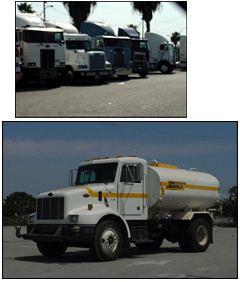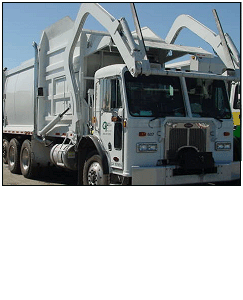|
|
|
BioDiesel is considered 'the friendly fuel' and is the clear alternative for many reasons.
Contains no Hazardous Material
Petroleum Free
Zero Sulfur
Non Toxic
11% Oxygen
Elevated Cetane
Increased Lubricity
Higher Flash Temperature
The pungent smell of diesel fuel is replaced with a slight scent of
vegetable oil. BioDiesel may be used in any unmodified Diesel Engine,
in it's pure form.
Significant Reductions in Tailpipe Emissions
(14 EPA FTP tests)
Particulate Matter (PM) -55.4 %
Carbon Monoxide (C)) -43.2%
Carbon Dioxide (C)2) -78.3%
Hydrocarbons (HC) -56.3%
BioDiesel may also be blended with Petroleum Diesel. A
20% blend (B-20) still provides emission benefits by reducing soot, particles,
hydrocarbons, carbon
monoxide, carbon dioxide, and sulfur by up to 20% each.
Available in 1 gallon, 5 gallon, 55 gallon and bulk deliveries for both on & off road users.
 |
|
|
|
||||
• Non-toxic and biodegradable -BioDiesel is the only fuel to have passed the EPA's Tier I & Tier II Health Tests. • Greatly improves air quality - A special concern
onboard our children's school buses. • Reduces waste -BioDiesel can be made by recycling waste cooking oils and grease.
|


|
|
|
|
||||
| •Sail Boats
• Pleasure Boats •Cruise Ships • U.S. Coast Guard •Research vessels • Dredging Equipment •Port Operation • Dock Equipment Other attributes: • BioDiesel contains no sulfur, which equals no smoke. • Start-up, power and range are all similar to diesel. • Users have reported a pleasant odor compared to that of the offensive exhaust fumes produced by diesel. |

|
|
|
|
||
• Does not require special storage - BioDiesel can be stored in petroleum underground tanks or in above ground tanks BioDiesel is non-flammable and non-combustible. • The flash point is 300 degrees compared to petroleum diesel at 125 degrees Fahrenheit. BioDiesel is safer to store and transport. • BioDiesel causes no eye irritation and is non- toxic. • BioDiesel exhaust produces a pleasing vegetable oil or French fry smell. · |


|
||||
• Significantly reduces emissions • No sulfur and no petroleum verses low or ultra-low sulfur petroleum diesel. • Operates in any internal combustion diesel engine. • Requires no costly engine modifications or infrastructure compared to Alternative Fuels CNG/LNG and Propane. . |
|
||
• Engine performance and maintenance have the same characteristics as petroleum diesel without the same harming health effects. • A study by Booz-Allen & Hamilton, Inc. found that fleets using a 20 percent BioDiesel blend would experience lower total annual fueling costs than other alternative fuels." (National BioDiesel Board Website) · |

|
|
|
|
|||||||||||||
| Just to name a few of the heavy-duty applications that can benefit by using BioDiesel. Other attributes: •BioDiesel contains no sulfur, which equals no smoke. •Torque output and fuel consumption is comparable to diesel. |

|
||
| •ASTM- American Society of Testing and Materials (ASTM), issued a fuel specification for BioDiesel (D6751), in December 2001. •BioDiesel provides improved lubricity.
Ultra-low sulfur petroleum diesel
has reduced lubricity, which may cause premature
wear or malfunction. A 20% blend of BioDiesel with
an 80% blend of petroleum diesel (B20) can reduce emissions
and eliminate any need for lubrication additives.
|


|
||
• Harmful emissions are reduced with BioDiesel and BioDiesel blends. Petroleum diesel exhaust is listed by the Environmental Protection Agency (EPA), as a known carcinogen (cancer causing), and is listed as a Toxic Air Contaminant (TAC). Using BioDiesel reduces harmful toxins and helps to protect workers that are exposed to diesel engine exhaust. |
 |
|
|
|
||||
| •Significantly reduces regulated and non-regulated emissions such as, soot, particulates, carbon monoxide, sulfates, hydrocarbons, and other toxins. •BioDiesel contains no sulfur and is petroleum free compared with low or ultra-low sulfur petroleum diesel. Currently, BioDiesel meets the 2006 EPA standard for sulfur content. •Reduces the need to install costly particulate traps. BioDiesel used in 100% pure form reduces particulate matter 40-50% over conventional diesel. |







